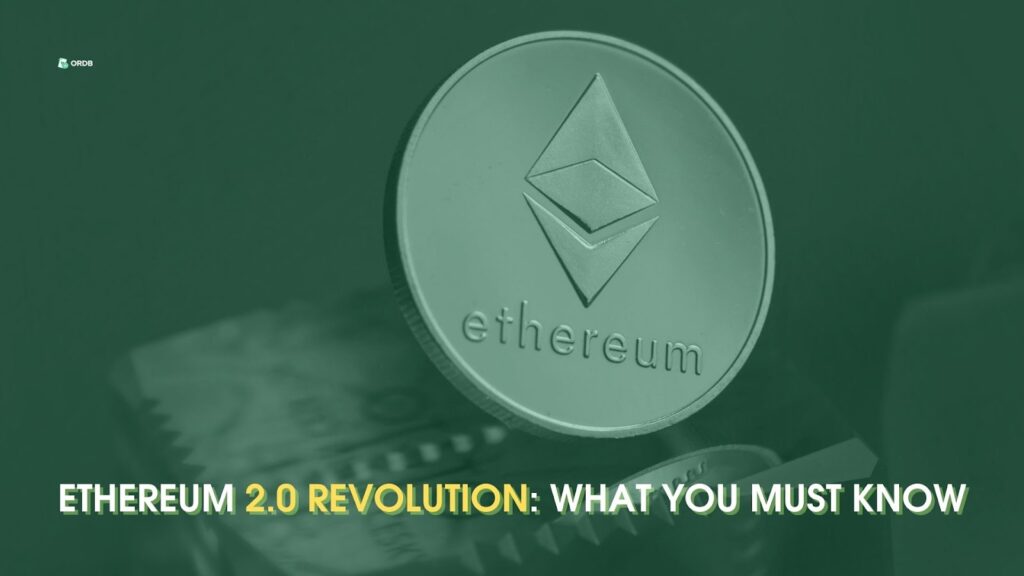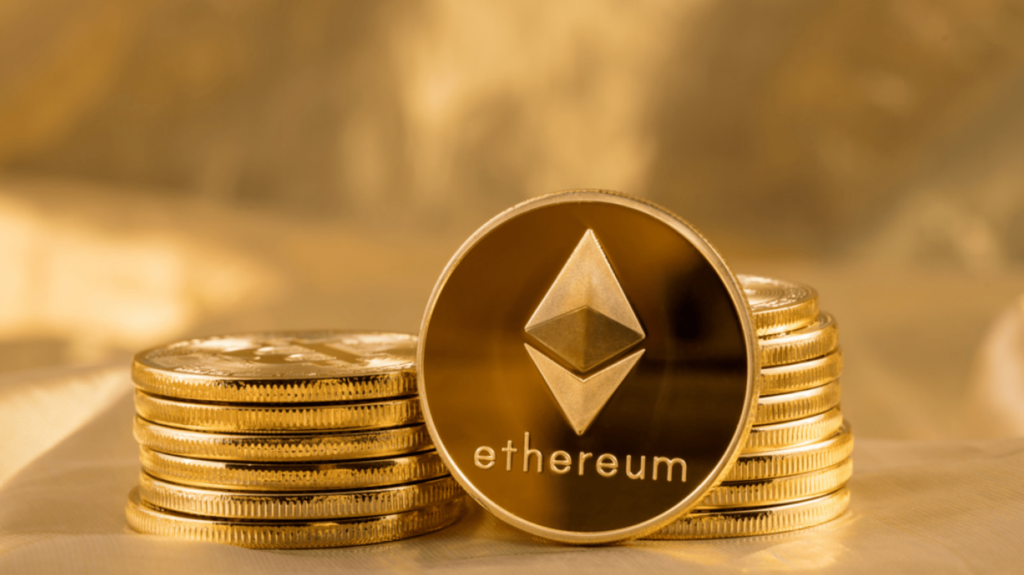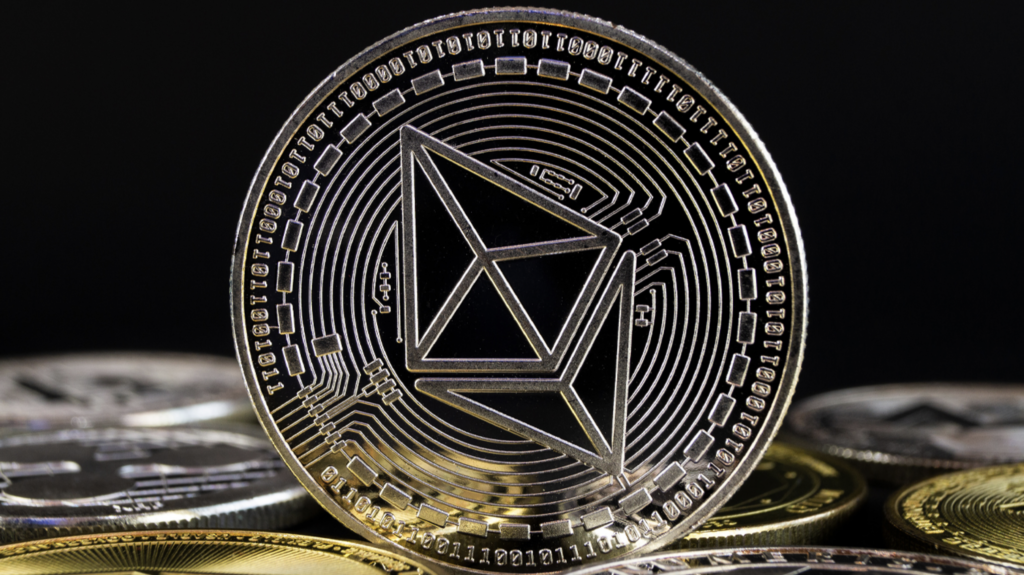Revolutionizing Blockchain: Ethereum 2.0 and Its Impact on the Crypto Landscape

Cryptocurrencies and blockchain, the ever-growing data records list, have changed the way we use and interpret finance. For many people, these technologies were scams, weird stuff, and whatever else, but not a useful thing that can save us from many financial challenges. The practice, in turn, shows that blockchain technology and cryptos are MUCH-needed solutions.
Nevertheless, the blockchain revolution did not solve ALL issues we face. There were and still are limitations and negative impacts, especially regarding the eco-footprint and energy consumption. The introduction of Ethereum 2.0, an upgraded version of the top blockchain many users prioritize, can improve the situation. How? We will delve into how!
Understanding Ethereum and Its Current Limitations

What is Ethereum? This universal distributed ledger allows smart contract creation, development of decentralized applications (dApps), and open-source software usage in parallel with giving users financial instruments that guarantee anonymity and full control of money.
Strengths
Its key benefits are…
- Self-executing smart contracts, aka zero need for financial intermediaries, because those contracts self-execute when specific conditions are already met.
- Full decentralization, aka there is a node (computer) system, and each machine takes part in the consensus process, guaranteeing no players alter something in the system or have extra control over it. First and foremost, that ensures no censorship but also gives all participants equal rights.
- Guaranteed transparency since no person or machine can change the data put into the ledger; once this information is on Ethereum, it cannot be manipulated, and everyone can access an auditable history of transactions.
- Interoperability, since Ether is open-source software, which means that the source code can be used for collaboration.
- DeFi, aka transactions, borrowing, and trading without the interference of traditional financial institutions. That also means lower fees and no taxes (in some regions).
- NFT opportunities, boosted security, etc.
Regarding the consensus mechanism, Ether switched to Proof-of-Stake (PoS), which resembles Proof-of-Work (PoW) but is much more cost-efficient and eco-friendly.
Moreover, we cannot neglect the environmental concerns ETH has solved! So, Ether now uses PoS, reducing its energy consumption by 99.95%. Sure, that does not mean it has become zero-carbon, but still! Today, this blockchain uses around 85MW of power (which seems like nothing in contrast to the previous 8.5GW). Given that, we can say that its decarbonization is the biggest in tech history, which is another win.
Challenges
- Scalability: The computational requirements to validate EVERYTHING become tighter as more people start using blockchain. In the simplest terms, the number of users, dApps, and transactions increases, leading to problems with timely validation — a-a-and it takes much longer to do the same things that used to take a minute. Furthermore, the transaction throughput limitations rather often lead to network congestion and higher transaction fees.
- Ethereum gas fees continue to increase: Ether has been setting new personal anti-records with gas fees, as the transfer charges cost over $5 sometimes. Some swapping fees can reach $13.22, while some deposits “ask” for approximately $39.04 fees.
- Centralization danger: Ethereum has tight competition with traditional institutions and large exchanges since those also want and demand ETH staking power. Moreover, with the US Senate’s Push to Regulate DeFi as Banks, Ethereum’s independence and decentralized nature are at stake.
- Inefficiencies due to cross-chain communication issues: Blockchains are all unique, and system incompatibilities can lead to deboosted collaboration and similar issues. Today, Ethereum and some other leading blockchains need more cohesive and inclusive solutions to guarantee that users can collaborate, regardless of their blockchain choice.
- Complexity for many users: Even though the developers do their best to create user-friendly solutions, blockchain matters are still challenging for anyone who is not crypto-savvy, meaning that mainstream cryptocurrency adoption is not on the list of the likeliest events in 2024.
Introducing Ethereum 2.0

Ethereum 2.0 will remove the bog of network congestion, scalability issues, and accessibility challenges. Created to enhance the system overall, it is expected to give Ether a higher level of adoption and also reduce gas fees that are reasonable but painfully high in some cases.
So, here are the changes to expect…
#1 Scaling Ethereum for lower fees
Ethereum is being improved and scaled by a layer 2 solution, meaning that additional networks are built on top of the basic layer 1s. You can say it is an extension, still a separate blockchain, but the one that makes it all better. The second layer communicates with the first one, ensuring decentralization guarantees and similar security mechanisms. That layer submits bundles of transactions, helping to unload the base level, which minimizes congestion.
The sharding mechanism that will guarantee all that and many more improvements is called Danksharding. For now, validator work is obligatory to ensure that all blocks function properly and have the right data; cryptographic proof of their work is also required. Regarding Danksharding, in simpler words, that is batching transactions, merely putting all these results in the Ethereum system, and verifying this information, leaving it checkable for some time. Compressing transaction data ensures more space for many more transactions, allowing users to send and receive money faster with lower fees since this process is also less costly.
The Danksharding project is not yet implemented today, and it might take several years to see it in action.
ALSO! Note that some solutions to achieve this can be of centralized nature. Still, Ethereum blockchain developers claim that such solutions will be temporary and the chain will be 100% decentralized right after full implementation.
#2 More security + resilience against attacks
Ethereum is already among the most secure systems in the world. Nevertheless, it is not ideal, and Ethereum 2.0 will (most likely) fix that.
The developers want to attain that by making the whole thing faster, meaning that all operations will be finished in milliseconds, and no one will have an extra moment to reshuffle, revert, or manipulate them in any other way. That solution shuts down a big class of cybersecurity attacks without bringing any inconveniences to the users (and vice versa, that is a great enhancement).
Proof-of-Work → Proof-of-Stake + an upgrade
The chain has already started working with PoS instead of PoW, but a slight upgrade makes it all different. Staking withdrawals let users get their ETH instantly and use coins for non-staking purposes, making them less reliant on liquid staking derivatives, which are the most influential centralizing forces on Ethereum.
This project step is live now! It has been in operation since April 12, 2024.
Secret leader election (SLE) against DoS attacks
This system ensures that block proposers are not knowable in advance. When a proposer works with slots, they can DoS and miss an opportunity to propose a block, which allows them to extract the MEV of TWO blocks or steal money from transactions that should have been separated (aka stuff them in one and claim transaction fees).
To avoid that, the devs are implementing a system that uses a random selection protocol to pick electing block proposers. At the beginning of each period, a random group of validators is selected from a larger pool to sample commitments. This sampling process involves a randomness mechanism called RANDAO.

Once the shuffling is 100% done, the commitments are put in a specific order using the mentioned RANDAO mechanism. This ordered list is then mapped onto Ethereum slots. Given that everything is visible, the validators can literally see which commitment is with which slot, and they can propose a block.
This procedure is continual and significantly reduces the possibility of a proposer manipulating blocks. Yet, I must highlight that this mechanism is in the research stage, and there are no specifications of how this will become a reality in the nearest future. So, we will first see a prototype in… a few years? But this topic is still hot in the Ethereum 2.0 discussion.
#3 Censorship minimization
Ethereum 2.0 must guarantee that decentralization remains, well, decentralized, and no small groups/individuals gain too much influence. That includes software creation and implementation that must share validators’ responsibilities. As for now, this technology is called distributed validator technology (DVT) — you can learn more about it on Ethereum 2.0 official website.
Another plan is to implement proposer-builder separation (PBS), which allows validator-1 to create blocks while validator-2 will broadcast them, ensuring normal and efficient building algorithms functioning in parallel with guaranteeing that a stake will not concentrate. Given centralization and fairness, the profit-maximizing blocks will be a priority and will contribute to Ethereum 2.0 censorship resistance.
#4 Enhanced user experience
The developers plan two major changes regarding user experience, which are the following:
#5 And other upgrades
Some other projects that will find optimal implementation in several years are
- EVM — Ethereum Virtual Machine — upgrade, turning the ledger into a finite-state machine
- Removing commands that are not needed anymore (like SELFDESTRUCT)
- Making Ethereum 2.0 quantum-resistant etc.
The Future of Ethereum 2.0
The future (so far!) looks bright, as the new upgrades will greatly enhance Ethereum, bridging the old and tested solution to something new, better, more scalable, efficient, and eco-friendly. Moreover, enhanced user experience and architecture optimization will benefit more people from the Ethereum upgrade because the hardware requirements and operation complexity will drop.
Smart Contracts and DApps in Ethereum 2.0

Ethereum 2.0 enhances the capabilities of smart contracts and decentralized applications (DApps) by solving the scalability problem and reducing transaction costs. That will also help the developers enhance and upgrade their existing projects by implementing more sophisticated concepts that would have taken much more time and effort given the present scalability. Of course, new projects will enjoy the same benefits.
DeFi in Ethereum 2.0

Ether has already become the best DeFi solution for many users. Its native cryptocurrency is as popular as Bitcoin (which, actually, falls behind with some solutions). Furthermore, Ethereum’s versatility, multiplied by the efficiency we will get, can make it the #1 choice for many purposes, including all DeFi activities, tool creation, and NFT popularization. Additionally, increased scalability and reduced fees will attract more investors and users to the crypto space.
So, multiple wallets, exchanges, DeFi apps, and other much-needed solutions will be able to provide faster services while guaranteeing security with lightning-fast contract executions, concreting the data on this blockchain.
Faith in Web3

Mainstreaming token-based economics, blockchain technologies, and decentralization will let more users see that the Web3 concept is becoming a reality that must be supported to normalize it. With more architectural enablers, attention, and faith, verifiable computing and ultimate interoperability will be the next step in the tech revolution.
But… we cannot ignore the potential drawbacks and risks
Many groups and individuals are eager to see what the Ethereum upgrade brings into practice. Today, we can see intensive promotion of this worldwide project, as well as some enthusiasts exaggerating the benefits.
Now add the fact that most of these upgrades are still in the research phase. The developers themselves say that this may take YEARS. Now imagine how hype fades, the expectations are yet to be met, and it seems that nothing has changed. In parallel, gas fees continue to grow, network congestion remains a serious problem, and there is no light at the end of this long tunnel. The mentioned can avert a serious number of people, especially those who are careful with innovation (and they are the biggest group).
Even enhancing accessibility and user experience will not do magic. Gas fees are the #1 issue that must be solved ASAP, and there are no immediate solutions to correct this.
Ethereum 2.0 Coin

First and foremost, we must clarify the following: there will be NO new coin, and there will be no need to convert anything. Eth1 and Eth2 will be fully merged, and there will be the same old ETH coin.
Given that Ethereum 2.0 coin DOES NOT EXIST, please stay cautious when it comes to communication with “representatives” and “official accounts” that say there must be a transition of some sort. Such messages, news, and incentives to buy ETH2 are scams.
Ensure you are only subscribed to the real accounts and do not interact with suspicious senders.
Final Words
The crypto community anticipates great changes, but the significance of Ethereum 2.0 in revolutionizing blockchain technology should not be overestimated — that will not be a solution for everything at once. The Ethereum upgrade focuses on security, fees, and accessibility a lot, and that will open new gates to crypto opportunities, securing the future of Web3 in parallel. Still, we should not expect the changes to fall on us in 2024, and even 2025 since many sub-projects are not even in development but in the research stage.
It is important to support developers today because they face a major challenge that will take at least four years of development. We must also be ready to meet the beta and proto versions that will malfunction, lag, and need more improvements. All that is necessary for the brighter crypto future — and IT IS COMING.
